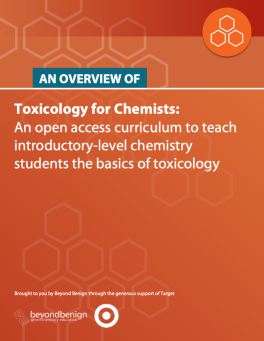04 - Reaction Mechanisms (Toxicology for Chemists - Module 4)

Summary
This module gives an overview of the main reaction mechanisms seen in toxicology studies. Students will learn primarily about the main electrophilic reactions that bind toxicants to proteins, in addition to a brief introduction to reactive oxygen species and radical reactions. This module pairs well with Module 11 – Structure-Activity Relationships, and these lecture slides are also included for your convenience! Finally, the full deck of ChemToxTidbits (one-slide case studies on specific organic chemistry reactions and their relationship to toxicology) are included.
What’s included?
Lectures:
“4AB – Reaction Mechanisms in Toxicology” (1-2 hours)
“11A – Structure-Activity Relationships” (1-2 hours)
“11B – Structure-Activity Relationships” (1-2 hours)
“ChemToxTidbits Slides” (to be used individually)
Supplementary Information:
Two student assignments.
File Size: 19 MB
This course module was authored by:
Dr. Douglas Raynie, Associate Professor, South Dakota State University
What’s included?
Lectures:
“4AB – Reaction Mechanisms in Toxicology” (1-2 hours)
“11A – Structure-Activity Relationships” (1-2 hours)
“11B – Structure-Activity Relationships” (1-2 hours)
“ChemToxTidbits Slides” (to be used individually)
Supplementary Information:
Two student assignments.
File Size: 19 MB
This course module was authored by:
Dr. Douglas Raynie, Associate Professor, South Dakota State University
Safety Precautions, Hazards, and Risk Assessment
N/A
Digital Object Identifier (DOI)
https://doi.org/10.59877/TCMZ1299
File (PDF, PPT, image, etc)
File (PDF, PPT, image, etc)

